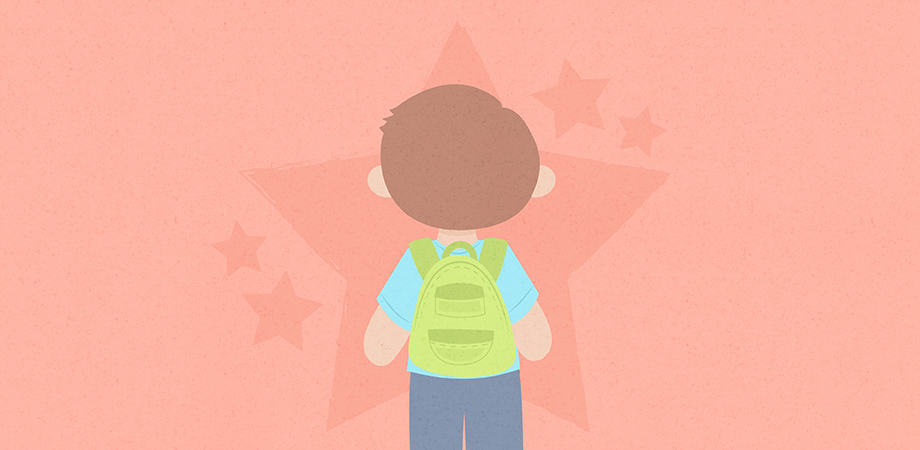

When the kids come home from school, your house may feel like a circus and you’re the ringmaster, trying to get everyone in order.
Backpacks, lunch boxes, and shoes are everywhere. Kids are bouncing off the walls, begging for sugary snacks, and refusing to settle down to do their homework.
If this sounds like your house, then it may be time to implement an after-school routine. An after-school routine checklist can turn the chaos to calm by giving kids predictability and consistency.
While you may know what you need to do when you get home every day, kids don’t always have a plan. They’ve just spent the school day being told what to do, having to follow rules, and being expected to sit still. Home is a safe space to let it all out.
When children have routines, they know what to expect. Many kids take comfort in predictability. You’ll often see better behavior when your kids know what’s coming next.
An after-school routine also ensures that everything gets done. No one will be scrambling around in the morning looking for their shoes or rushing to complete forgotten homework. Your morning routine will also be much more peaceful.
We’ve created two versions of a free printable checklist for you to use with your children. One is a checklist that’s simple for older elementary and middle schoolers to follow. The other is a picture checklist that will be helpful for kindergarteners and first graders.
Print them off and laminate it so that it lasts longer. Children can use a dry-erase marker to check off things as they complete their after-school schedule.
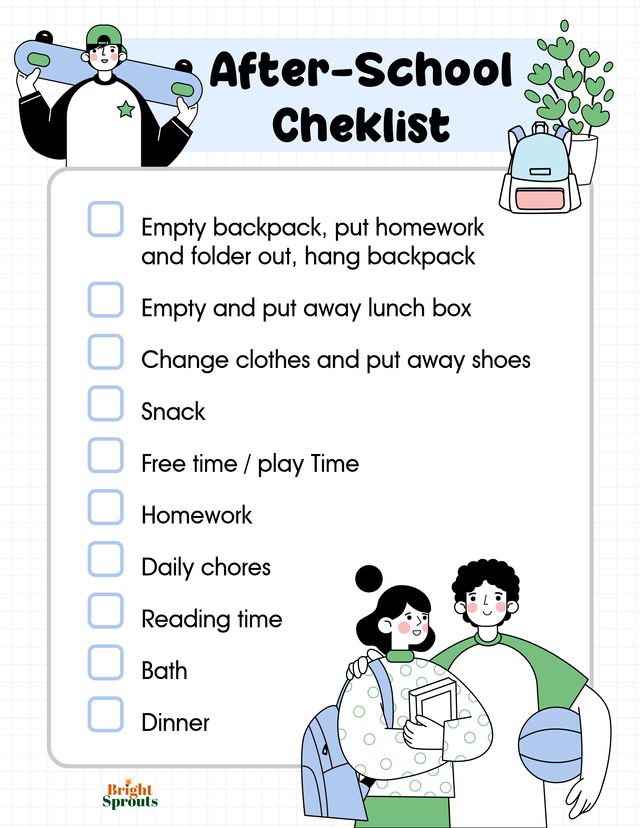

In the education world, many teachers divide classroom expectations into “rules and procedures.” Rules give kids ideas of what they’re allowed and not allowed to do. For example “don’t hit” is a rule.
Procedures tell kids how things are done, such as “we always put plates in the sink after eating.” Your after-school routine should be a set of procedures. There’s no arguing with procedures. Kids have a set of things they have to do. If they don’t do them, they’ll be redirected until they finish their tasks.
Checklists are also helpful for parents because it means less nagging. Instead of asking your kids if they put their things away or finished their homework, you simply direct them to the checklist.
This checklist contains roughly everything most kids need to do upon coming home from school. However, you may find that you need to make slight adjustments. Every child and every family is different.
Most kids need some decompression time after the school day before they get too involved in chores and homework, but some kids work best when they get all of those things done right away before moving on to more relaxing activities. Older kids may prefer to do their homework after dinner or later at night.
Ultimately, do what works for your family. Try one method and if it doesn’t work, don’t be afraid to switch it up and try something else. As long as you’re persistent, you’ll be able to achieve some calm in your house after school.
Below is a list of ideas for an after-school routine for your kids. It’s listed in the order kids should do each thing, but again, feel free to adjust for your needs.
Most kids do one of two things with their stuff when they get home: leave it in the car or drop it near the front door. Parents either wind up getting everything sorted or everyone rushes around the next morning, creating unnecessary stress.
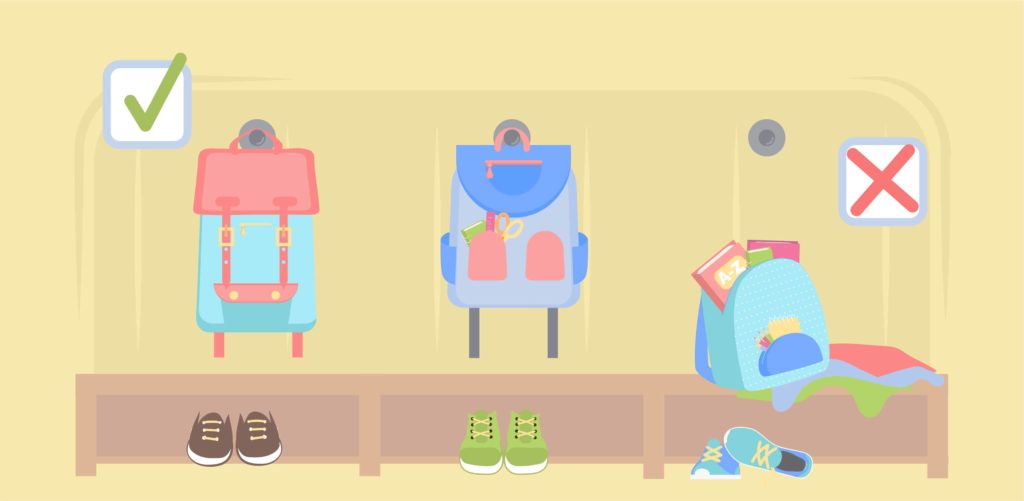
You can help with this by creating designated spaces for all of your kids’ things. If you have a mudroom or area where you can put some cubbies, they will have a place to put their bags, coats, and shoes.
When kids come in, they should go through their backpacks. If they have homework, they should put it where they do their work. If there’s stuff for parents to see or sign, it should go in a spot you designate. They’ll then put their backpacks, coats, and anything else in their spot.
If they have a lunchbox, they should empty it. All containers that need to be washed are put in the sink and trash is thrown away. The lunchbox should be left in a spot so it’s ready for the next day.
Not all kids change clothes after school, but if your kids wear uniforms or prefer to wear play clothes at home, they can change their clothes. Anything they take off is put in the laundry basket.
Most kids come in from school starving. If you’re not careful, they’ll raid the pantry and eat a lot of junk instead of something healthy. Unless you’re a parent who has your kids a special snack made each day, it’s a good idea to have all the snacks you’d like them to choose from in one spot.
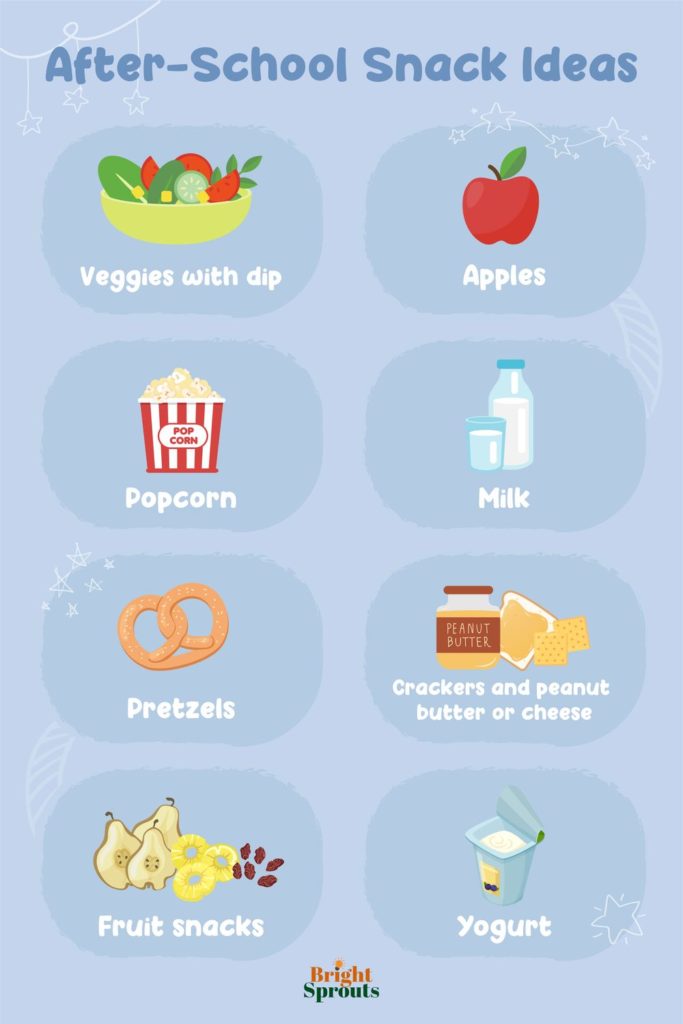
You can put a couple of containers in your fridge and pantry and put all of the healthy snacks in there. Protein, fruits, and veggies are always a good idea for this time of day.
If you don’t want your kids eating too many snacks and ruining their dinner, be sure to put a limit on how many they can have.
Kids need some time to decompress after the school day, so once they’ve had their snack, they need a little bit of free time, even if it’s only 20 minutes. During this time, kids should do something fun, whether it’s going outside, playing with dolls or trucks, or building with LEGO.
Older kids may use this time to do some exercises or yoga, read, kick a ball around outside, or just go for a walk. Try to avoid screen time at this point, as your kids likely still have some things to get done before dinner, and once they get on a screen, it’s that much harder to get them back on task.
After kids have had some time to relax, they should be ready to focus on homework. Homework is often a touchy subject with kids. If you feel like you’re struggling with your child to get it done every day, then making it part of their routine may help.
To get your kid’s homework routine as painless as possible, set up a spot for them to do their homework, such as at a desk or a spot at the table. Make a container with all the things they may need – pencils, pens, erasers, sharpeners, crayons, etc.
If your kids are younger, try to keep yourself free at this time in case they need any help. If possible, try to let your kids do their work independently.
Kids should next do a daily chore. You may have tasks they complete every day, like making their bed and putting away toys, but you may also want them to do one chore to help out the household.
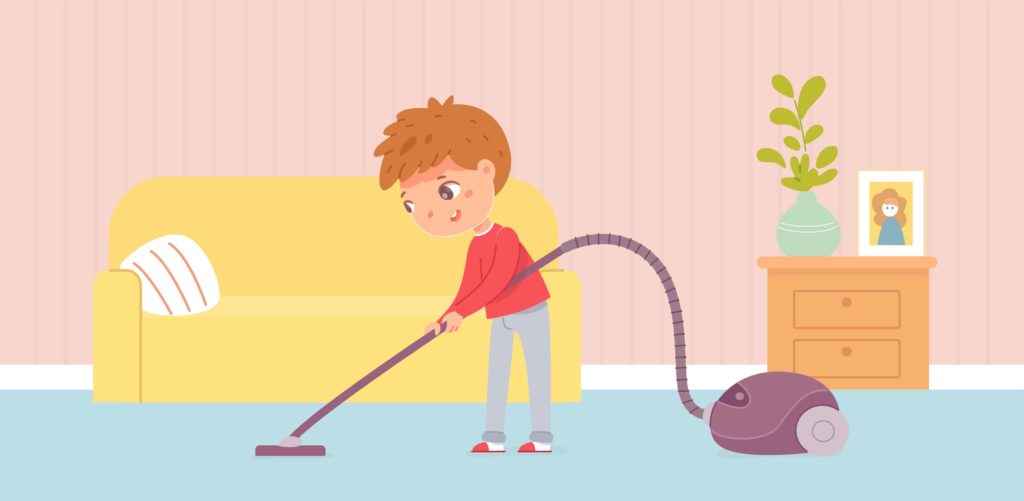
Chore examples include:
Be sure your kids’ chores are things that make them feel like they’re contributing to the family, not just busy work.
Free Printable: Chore Chart for Kids
Once kids have completed their tasks, they can have screen time (if you allow screen time on weeknights). It’s up to you how long you give them, but sometimes when you put screentime between homework/chores and dinner, it can serve as an incentive for kids to get their work finished instead of procrastinating.
If you don’t allow screen time, this is a great time for reading. It gives kids a chance to wind down before bath and dinner. Kids can read a book for school, but if you want it to feel like a reward, let them read a book of their choice.
Some families do a bath before dinner. You may prefer to make it part of your child’s after-school routine. It comes down to how much time you have after dinner and whether a bath gets them ready for sleep or hypes them up.
Once you make it to dinner time, the after-school routine is finally over! It’s time to gather at the table and enjoy a meal as a family. Your kids should be getting ready to wind down at this time and it’s the perfect time to talk about their days.
Activities and sports can throw a wrench in your after-school routine. If you’re lucky, they start right after school, but they often start a couple of hours after school or even later in the evening.
You usually just have to work around practices and games. Fortunately, this time usually lets kids decompress from the school day, so your only focuses at home are homework, dinner, and bathtime.
To keep your routine easy, try to complete homework a day ahead of time if possible. Eat something quick for dinner so your kids aren’t waiting for something to cook.
An after-school routine can be a lifesaver for you and your family and an after-school checklist will make it even easier for your kids to follow. When you make this part of your daily routine, things will be easier and you’ll have less stress. You and your kids will even have more time to spend quality time together.
Lisa Holliman has been teaching and writing curriculum for 12 years at an innovative private school in MS. She has two small boys who love to learn and try new things.




Sign up to receive our newsletter!